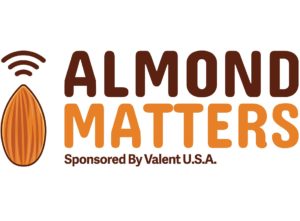In today’s Almond Matters, brought to you by Valent U.S.A., growers are preparing for the onset of hull split. Field Market Development Specialist with Valent U.S.A., Todd Burkdoll expects the early varieties to begin the process in about two weeks. With significant navel orangeworm (NOW) pressure in recent years, maximizing the efficacy of mitigation programs will be increasingly important.
“Putting on something prior to hull split is absolutely essential,” Burkdoll explained. “Once hull split has taken place, it’s too late. You can put it on at hull split, that’s a good thing. But I recommend putting on a treatment before hull split, seven to 10 days, and then at the very onset of hull split.”
Monitoring tools like traps and degree-day models can help time NOW treatments effectively. Early management programs will have the highest probability of success by getting good coverage with applications. Burkdoll suggests making the most out of applications, considering the current economic challenges.
“I put on DiPel every time we treat, just as a matter of prevention. A pound of DiPel with whatever I’m spraying. It’s relatively inexpensive and it’s soft. It doesn’t mess up your predators out there,” said Burkdoll. “If you were going on anyway with other things, a fungicide or a miticide spray, you can tag team it there too.”
Growers are also encouraged to consider the impact of neighboring properties on pest management programs. Organic orchards or almond orchards that are set for removal and thus not being cared for can be especially problematic. Burkdoll also described a scenario where a hull/processor a few miles away created significant problems for an orchard that was downwind. “The environment, where your orchard’s at, what’s in close proximity, what the neighbors are doing, these things all come into play,” Burkdoll noted.
Listen to the report below.











